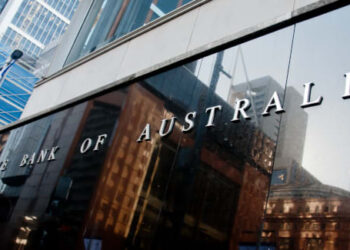The Oxford Economics Global Risk survey — which invited responses from 112 businesses between 7–16 June — has reported 85 per cent of respondents remain concerned about recent volatility in the US and European banking systems.
Respondents have priced in a 1 in 3 chance of an “adverse” banking system scenario lateralising in the near-to-medium term.
Specifically, businesses said there is a 21 per cent probability of a “marked further tightening in credit supply”, and a 15 per cent chance of another banking stress-related scenario triggering a decline in asset prices.
More broadly, the businesses — which have a combined turnover of US$2 trillion (AU$3 trillion) — remain negative (36 per cent) than positive (33 per cent) about near-term global prospects.
Approximately 44 per cent of businesses still see risks as tilted to the downside, albeit down from 55 per cent in the previous survey.
Respondents continued to expect subdued global GDP growth of just 2 per cent in 2023 and 2.3 per cent in 2024 — still below forecasts prior to banking volatility.
Given ongoing concerns over the outlook, businesses are hoping for earlier-than-expected interest rate relief.
A growing number of respondents expect the Federal Reserve (22 per cent) and European Central Bank (15 per cent) to commence monetary policy easing before the close of 2023.
But businesses expect rates to remain higher for longer in the United Kingdom, pricing in further tightening from the Bank of England in 2023 to a peak of 5 per cent.
No rate relief is projected in the UK, with rates expected to remain on hold throughout 2024, with just 10 per cent tipping a rate cut in 2025.
Monetary policy projections continue to shift amid evidence of a protracted fight to return inflation to target.
The Federal Reserve has actioned a cumulative 500 bps in monetary policy tightening but markets continue to expect further hikes as early as next month.
In Australia, the Reserve Bank of Australia (RBA) has lifted rates by a cumulative 400 bps, but economists are projecting at least one additional hike in the coming months.
The RBA governor has stressed the central bank does not expect to cut rates this year, with inflation remaining well above the 2–3 per cent target range.
According to the latest data, the consumer price index (CPI) rose 6.8 per cent in the 12 months to 30 April 2023.
The next inflation reading is scheduled to be released this week.







